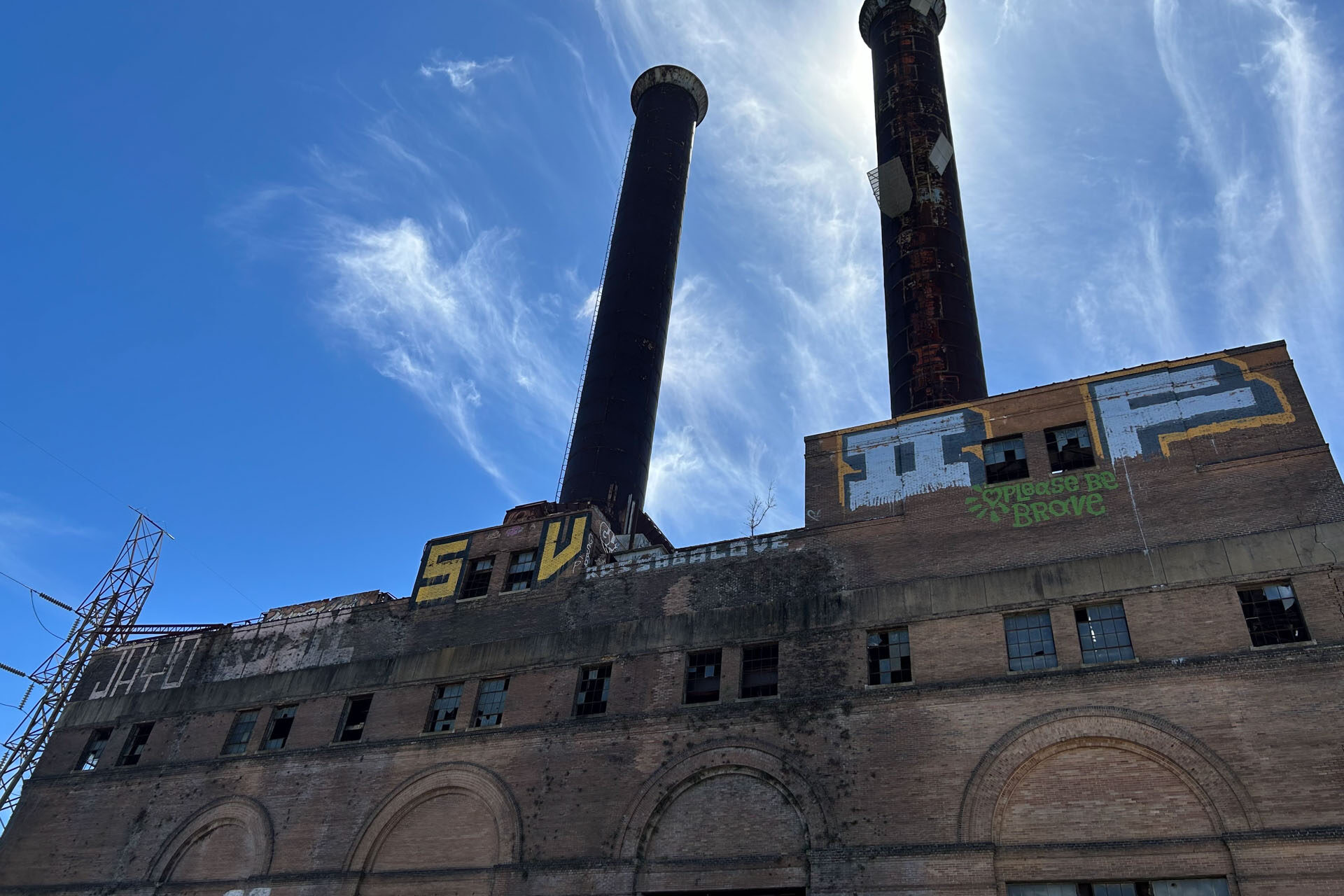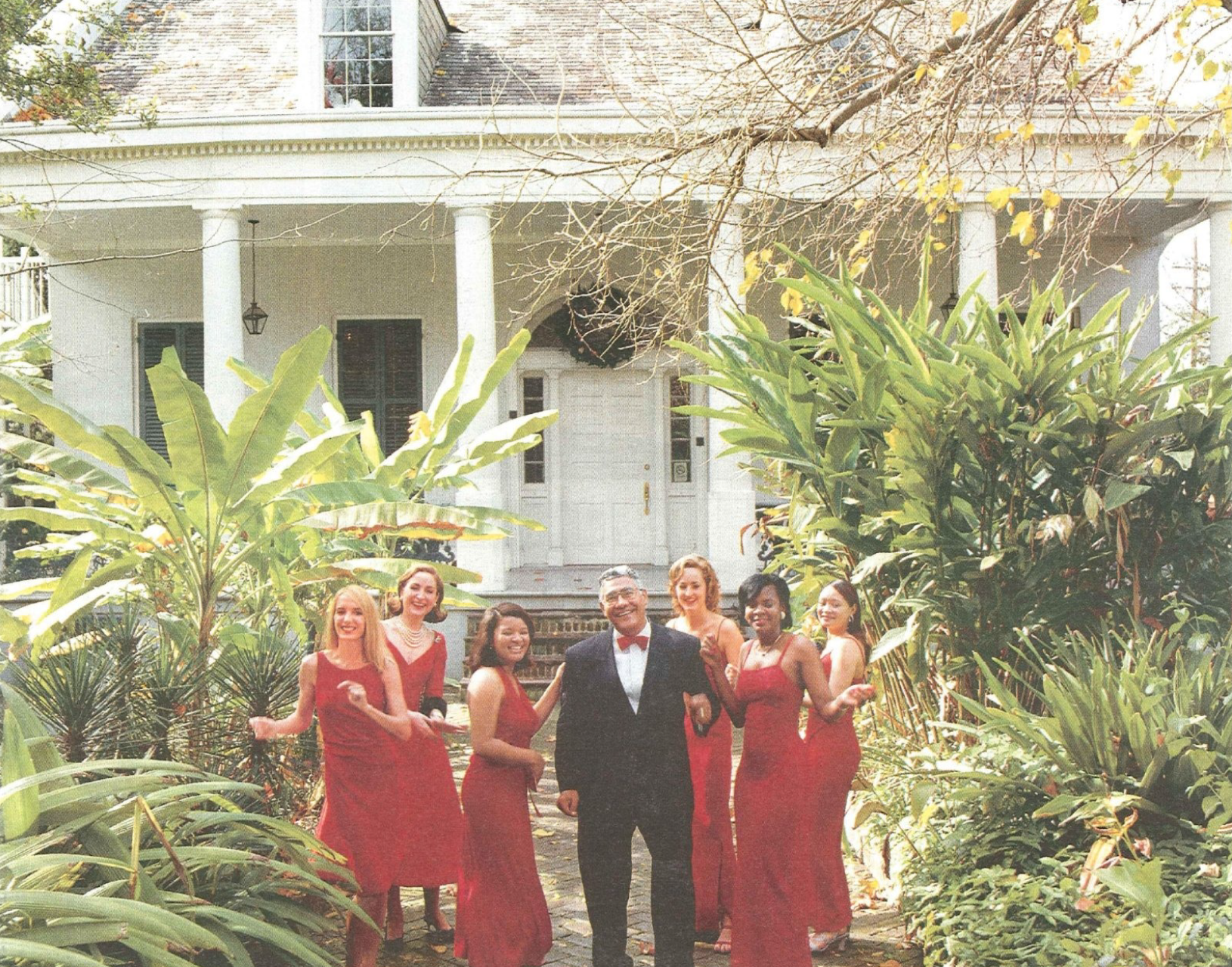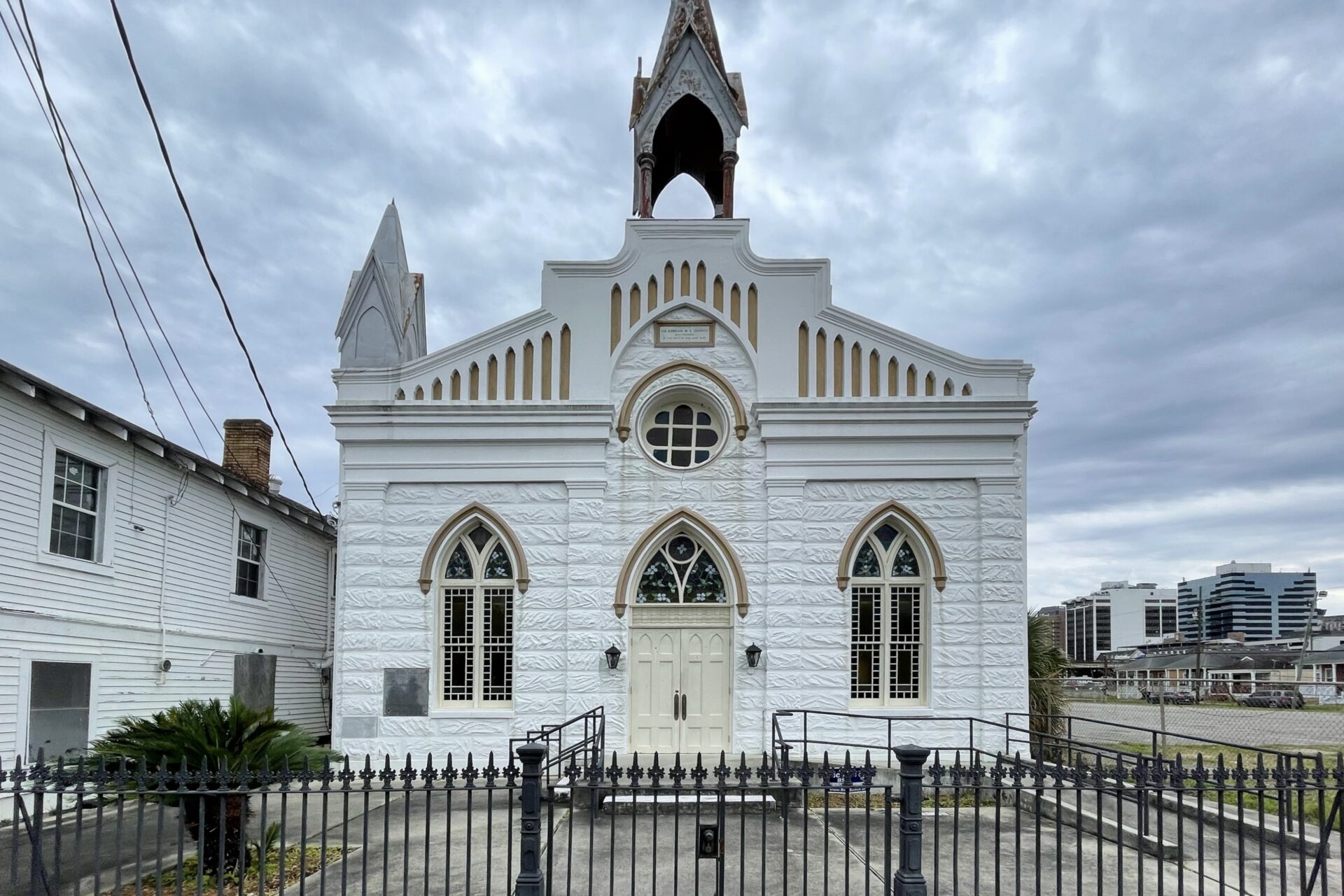Nearly every block of New Orleans has been touched by Black history. Take a stroll through any neighborhood, and you’ll encounter the talents and achievements of the African American community.
Here are just a few sites of particular importance to music history, culinary achievement, educational achievement, the Civil Rights Movement and more in New Orleans.
After exploring these sites, delve deeper into New Orleans’ Black History by visiting the PRC’s Jazz Houses Where They Lived exhibit; PRC’s Pontchartrain Park exhibit; and the archives of the Amistad Research Center, the New Orleans Public Library, The Historic New Orleans Collection and the new Louisiana Civil Rights Museum in the Ernest Morial Convention Center.
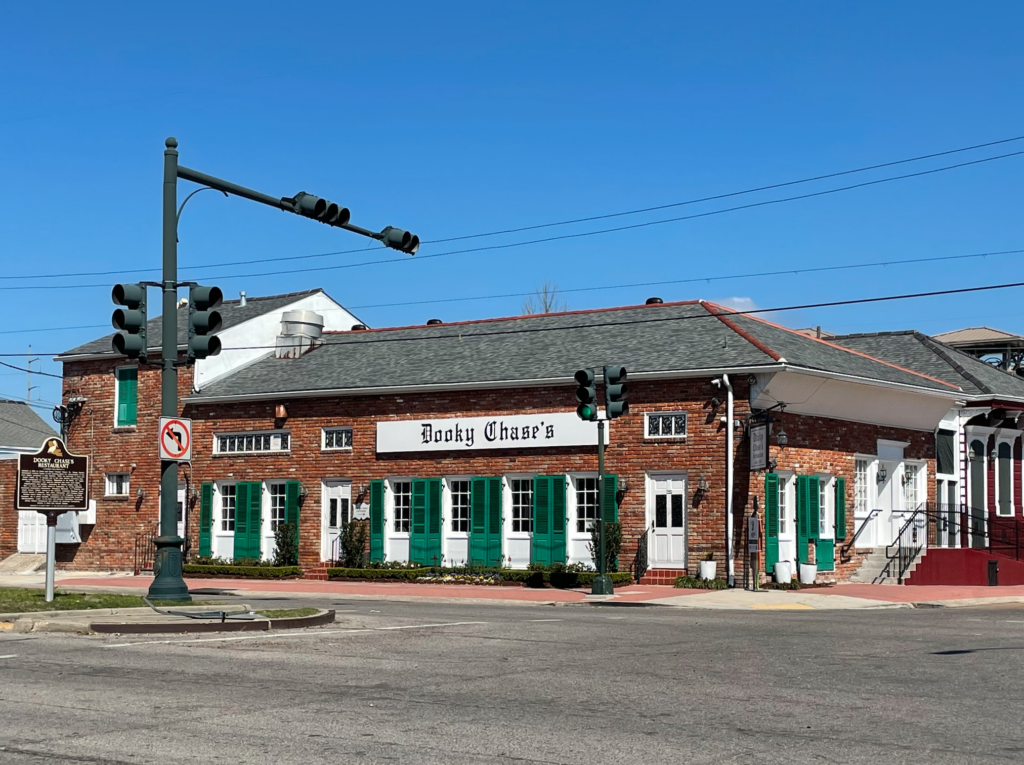
Dooky Chase’s Restaurant
2301 Orleans Ave.
Famous not only for its Creole cuisine, this pillar of the culinary community also was the site of major planning and strategizing during the civil rights era. Opened in 1939 on Claiborne Avenue, then moved to its current address in 1941, Dooky Chase’s served members of the Freedom Riders, Dr. Martin Luther King Jr., Duke Ellington, among many others. The restaurant was helmed for decades by Chef Leah Chase and her husband Edgar Chase Jr.; it remains a family-run enterprise today, with Edgar “Dook” Chase IV, the grandson of Leah and Edgar, serving as executive chef. Leah Chase died in 2019 at 96 years old.
“Before the United States Supreme Court reversed its 1896 Plessy v. Ferguson decision, Dooky Chase’s Restaurant had become the hot spot for discussing issues of civil and economic rights in the African American community,” according to the U.S. Civil Rights Trail. “At the time, it was illegal for white and black people to sit together. But Leah Chase opened the doors to her restaurant and invited activists into the upstairs dining room. From those strategy sessions, planned and scheduled activities propelled civil rights and protests in the courts and onto the streets of New Orleans. In the 1960s, Martin Luther King Jr. and others would join these local leaders for strategy sessions and dialogue over meals in the upstairs meeting room at Dooky’s.”
The restaurant has a historic marker and is one of the stops on the Louisiana Civil Rights Trail.
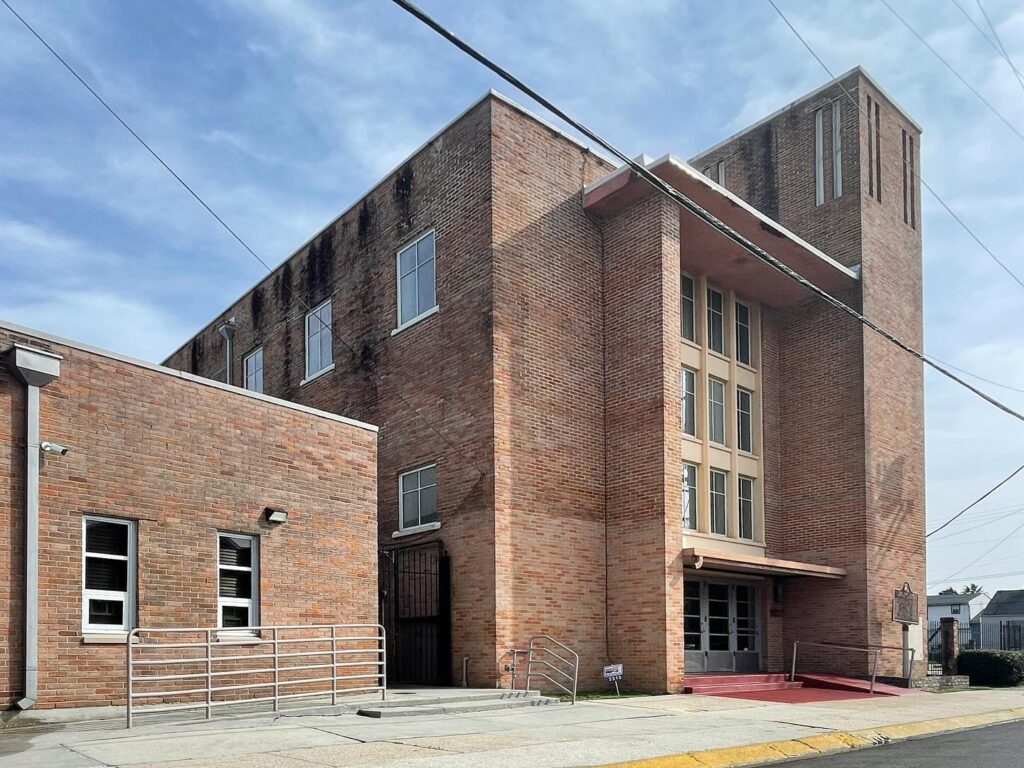
New Zion Baptist Church
2319 Third St.
The Southern Christian Leadership Conference, a leading civil rights organization whose first president was Dr. Martin Luther King Jr., got its start inside the New Zion Baptist Church in New Orleans. The conference organized and supported civil rights protests, and its members fought for African American voting rights as well as desegregation. Its first meeting, attended by almost 100 activists, was held on Feb. 14, 1957, in the church. The New Zion Baptist Church, which was built in 1921, also hosted members of the Freedom Riders.
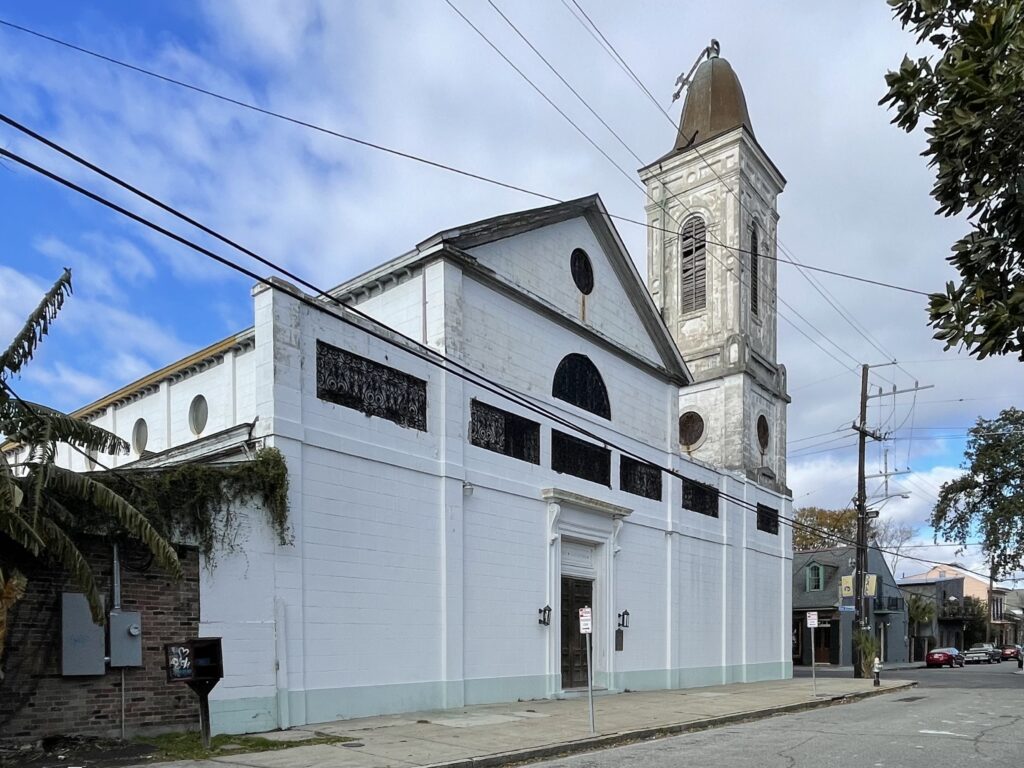
St. Augustine Catholic Church
1210 Governor Nicholls St.
Founded in 1842 by free people of color, St. Augustine Catholic Church, from its inception, was the house of worship for a mixed congregation, including the enslaved, as well as free people of color and white people. It continues to have a diverse congregation today. Many of the church’s original structures remain, including the marble main altar, some of the stained glass, and some of the pews. Homer Plessy of the monumental Supreme Court case Plessy v. Ferguson attended church here, as did civil rights leader A.P. Tureaud and jazz musician Sidney Bechet. The church was heavily damaged by Hurricane Ida and is raising money for needed repairs.
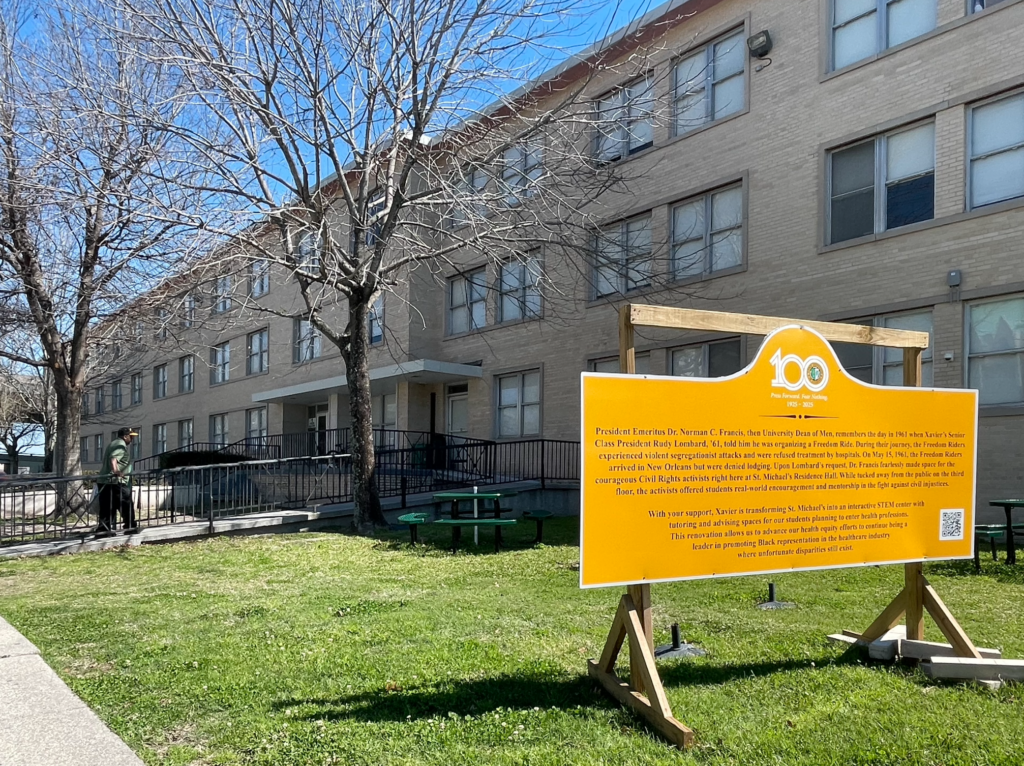
St. Michael’s Residence Hall at Xavier University
3935 Pine St.
When the Freedom Riders arrived in New Orleans in 1961, many hotels refused to house them, afraid of the backlash to their work fighting for integration. So, Xavier University of Louisiana opened its doors. The Freedom Riders stayed on the third floor of St. Michael’s Residence Hall at Xavier, the only historically Black and Catholic university in the United States. Xavier began as a high school on the former grounds of Southern University in 1915. After adding a school for aspiring Black teachers and establishing the College of Liberal Arts and Sciences, Xavier University of Louisiana emerged in 1925. Today, Xavier is still connected to its strong liberal arts foundation and serves more than 3,400 students.
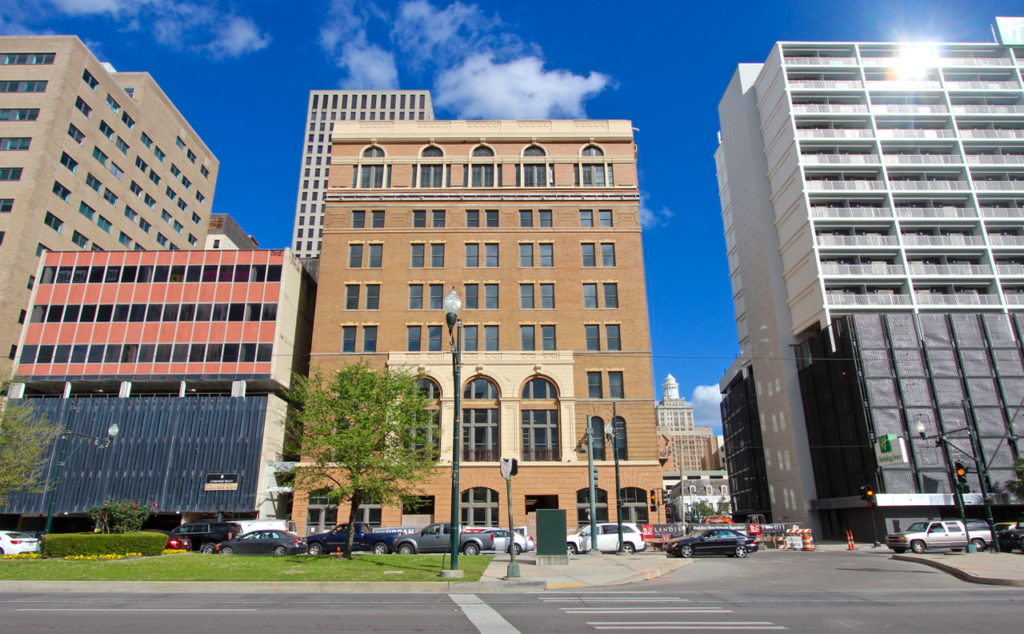
Pythian Temple
303 Loyola Ave.
Smith Wendell “S.W.” Green commissioned the construction of the Pythian Temple in 1908. Green had been born into slavery but was freed in adulthood and amassed a fortune as a grocer, and subsequently as president of the Liberty Independence Insurance Company. He commissioned the building as the International Grand Chancellor of the Knights of Pythias, a fraternal organization that had been established in 1864. The building hosted social clubs, political organizations, religious groups, insurance companies and businesses.
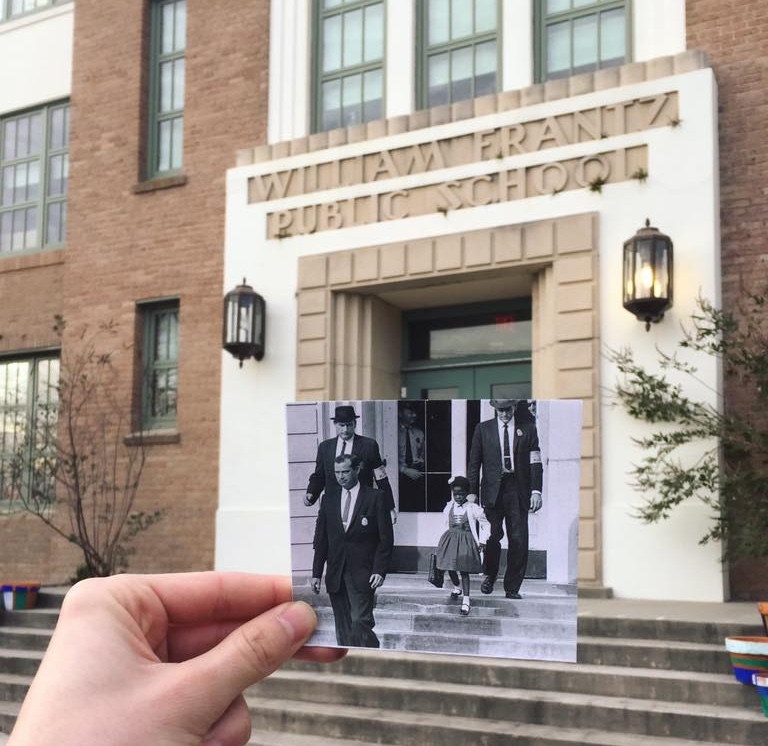
William T. Frantz Elementary School
3811 North Galvez St.
This formerly all-white school was integrated by six-year-old Ruby Bridges in 1960. Despite public anger and threats of violence from segregationists, Bridges’ bravery helped open the door for desegregation in Deep South schools. Bridges is still a Civil Rights activist today. There is a statue of Bridges on the school’s grounds to honor her.
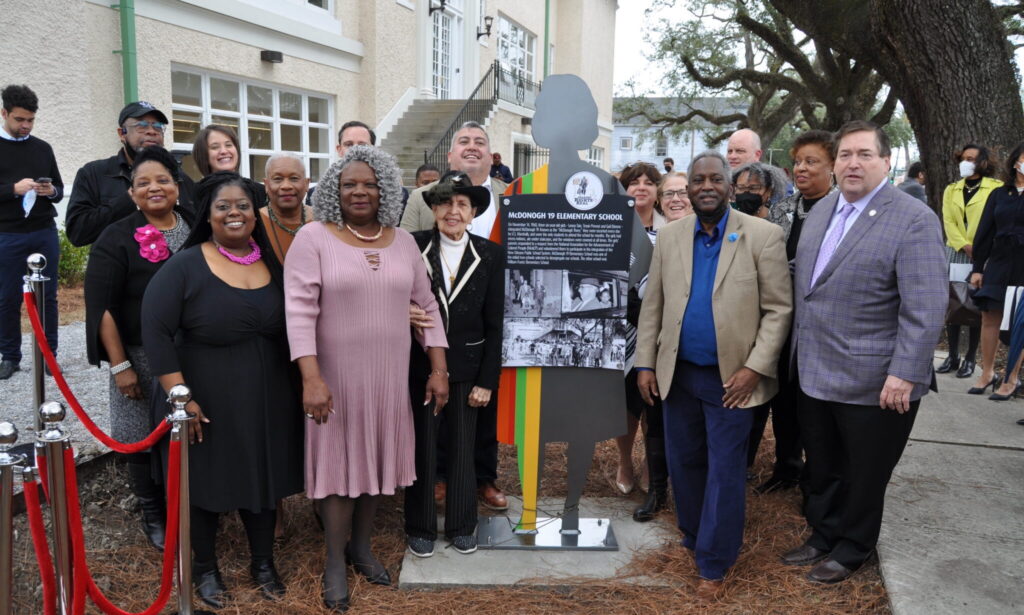
McDonogh No. 19 Elementary School, now the TEP Center
5909 St Claude Ave.
On the same day Ruby Bridges integrated William T. Frantz Elementary School, three Black students — Gail Etienne, Leona Tate and Tessie Prevost — attended the formerly all-white McDonogh 19 Elementary School, continuing the fight for integration. The girls and their families faced serious threats, and U.S. Marshals escorted them to school every day. Today, Tate owns the former McDonogh 19 School building and redeveloped into the Tate, Etienne, Prevost Center (TEP), a civil rights center.
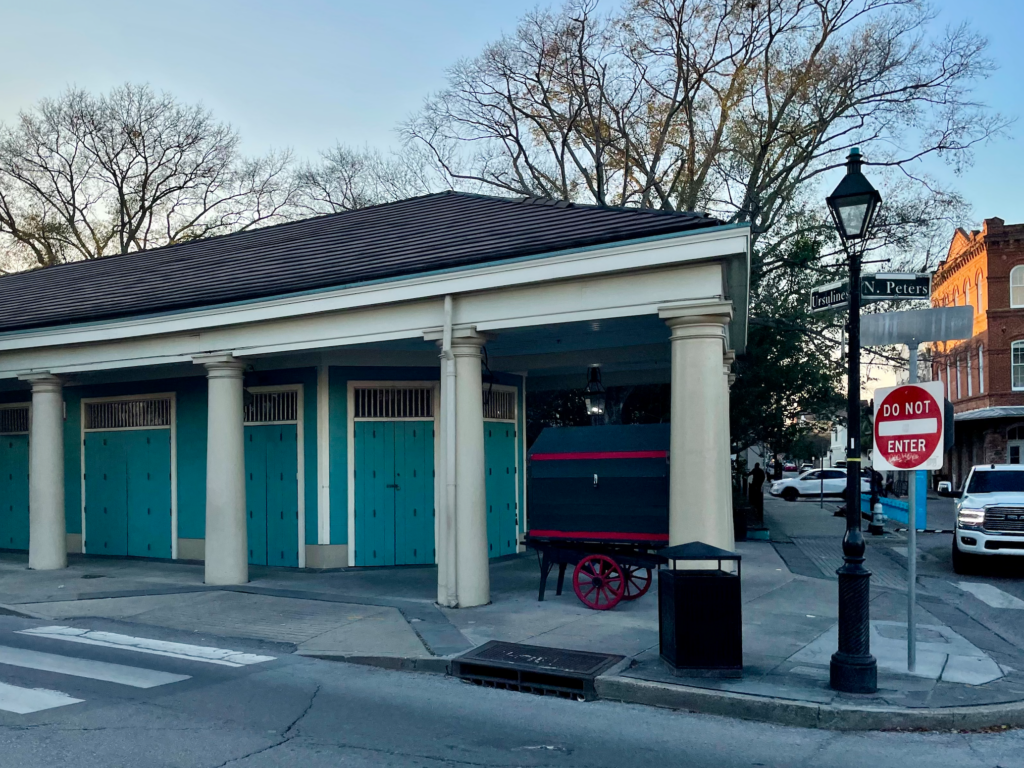
Rose Nicaud’s French Market Coffee Stand
Corner of Ursulines Ave. and N Peters St.
This corner of the French Market was once the site of Rose Nicaud’s famous coffee stand. Rose Nicaud, born into slavery in 1812, used the earnings from her coffee business to buy her own freedom by 1840. Nicaud began by selling coffee on her pushcart throughout New Orleans before eventually running a coffee stand in the Vegetable Hall of the French Market. The “Old Rose” coffee stand served as a meeting space for people of all races, ethnicities and classes in New Orleans. Nicaud’s legacy encompasses not only her business’ success, but also her personal triumph against oppression.
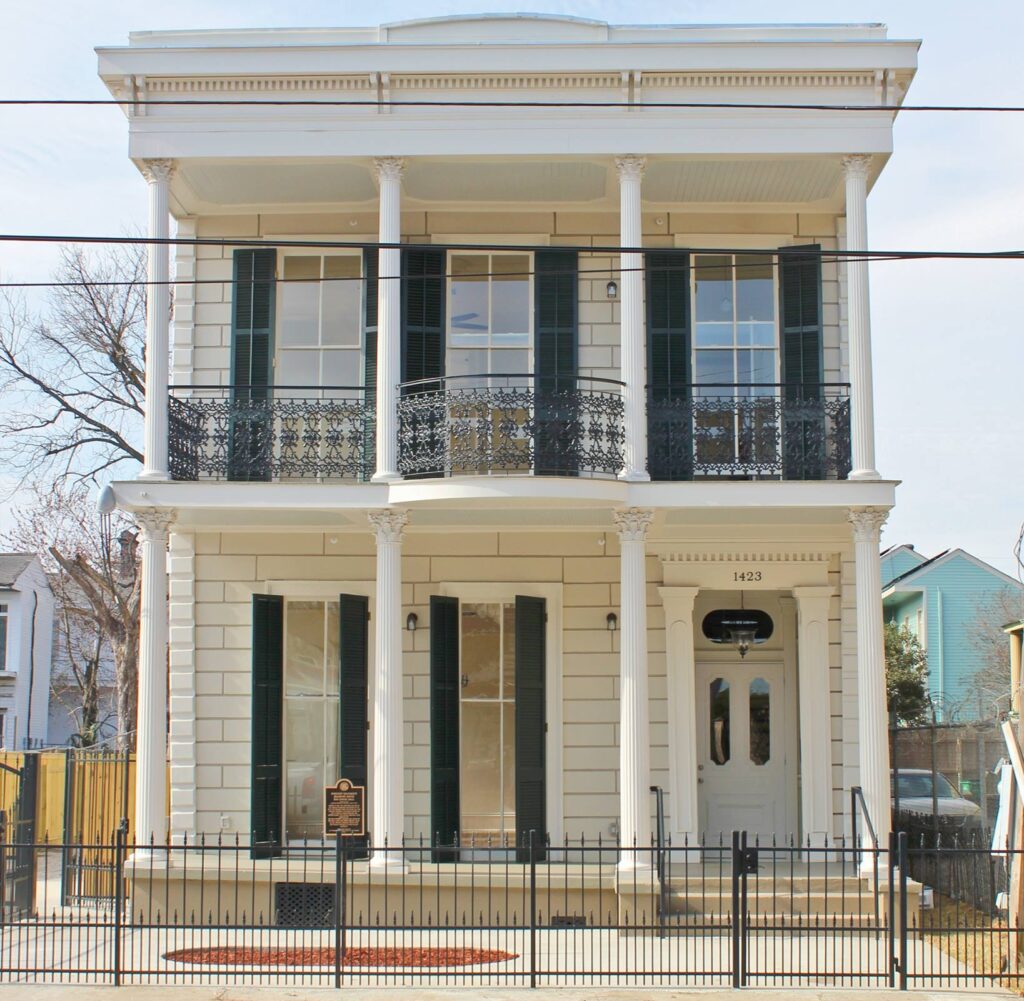
Straight University
2006 Canal St.
(Built in 1870, destroyed by fire in 1877, then rebuilt on Canal Street in 1878.) Straight University, now Dillard University, was founded in 1869 by Seymour Straight and the American Missionary Association. Post-Emancipation, Straight University provided African Americans with educational opportunities. Notable graduates included the first Black governor of Louisiana P.B.S. Pinchback, poet and activist Alice Dunbar Nelson, and political activist Mary Booze. In 1935, Straight University joined New Orleans University to create Dillard University, the first HBCU in Louisiana. The Preservation Resource Center of New Orleans has had the honor of restoring the former Straight University Boarding House and Dining Hall on N. Claiborne Avenue, a street known for its support of Black-owned businesses.
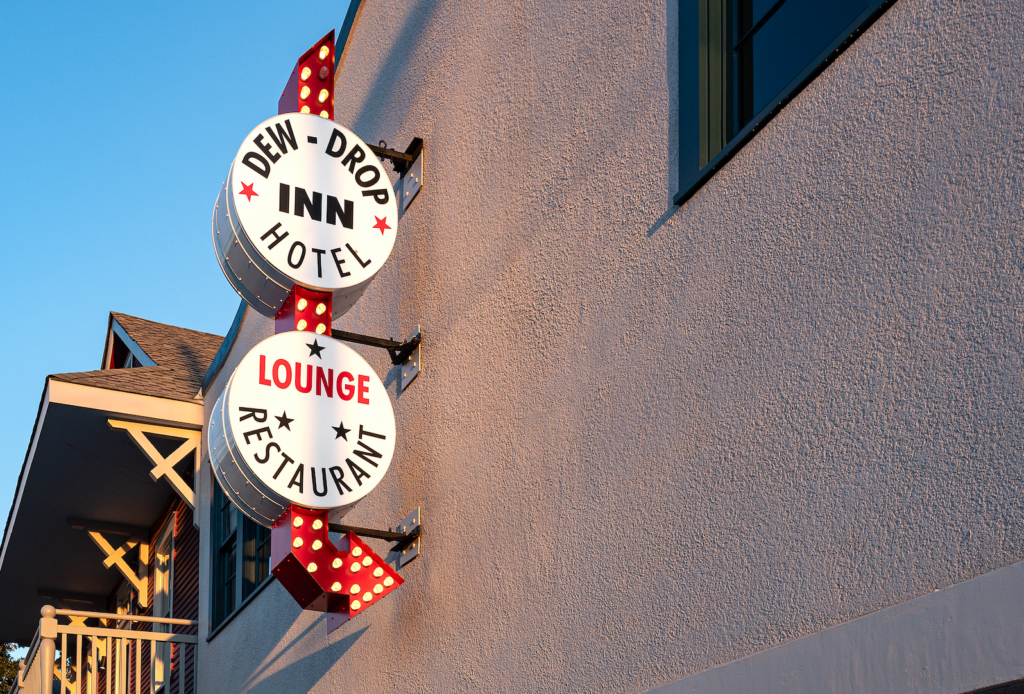
Dew Drop Inn Hotel & Lounge
2836 Lasalle St.
In 1939, Frank Painia started his business as a barbershop, but it would grow into a successful hotel, music venue, and restaurant that featured many prominent Black musicians, including Little Richard, Fats Domino, Irma Thomas and Ray Charles. The hotel closed when Paina died in 1972, but it is now restored and recently reopened for business.
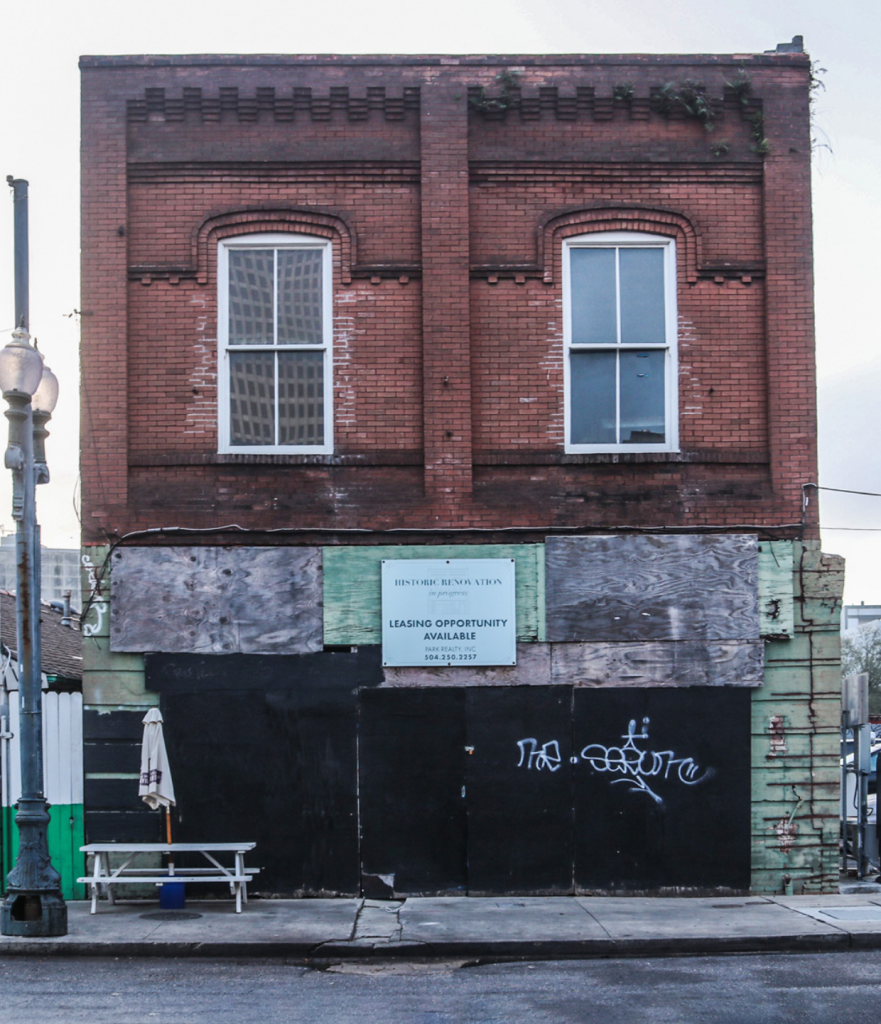
Iroquois Theater
413 S. Rampart St.
The Iroquois Theater opened in 1912 and featured talented African American musicians, including Louis Armstrong, Lonnie Johnson and Clarence Williams, along with various vaudeville acts. Unlike other venues, the Iroquois featured jazz concerts, instead of just performing jazz music for dances and smaller social gatherings. Today, this theater is listed in the National Register of Historic Places.
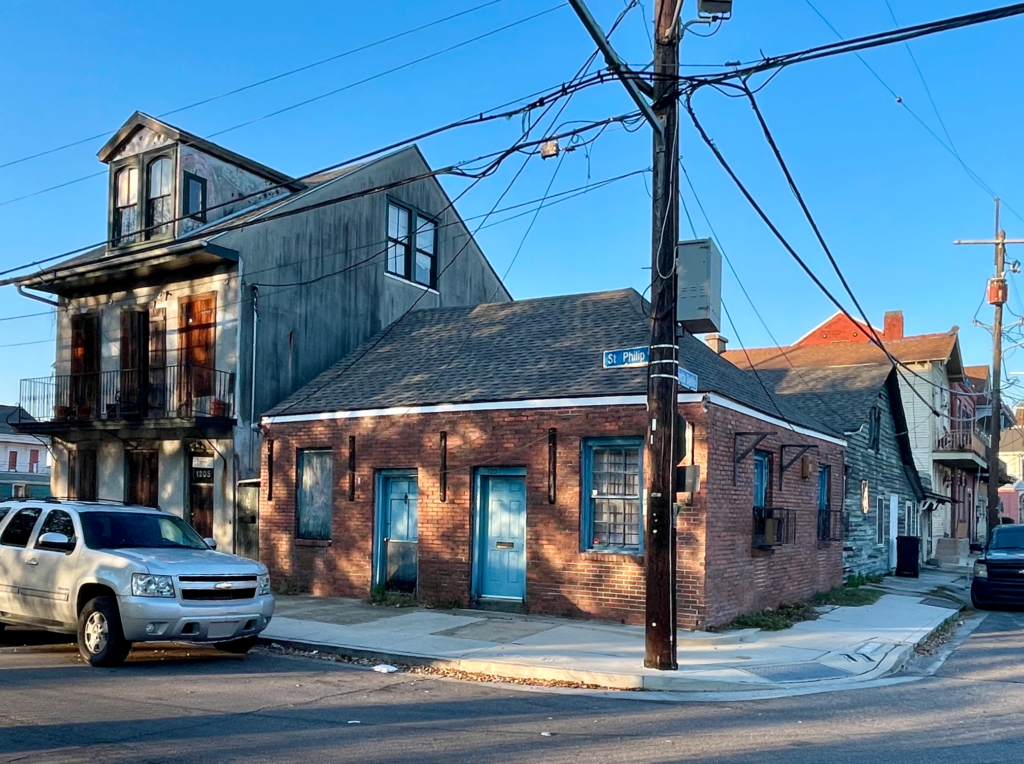
Anthony “Tuba Fats” Lacen’s home
1201 St. Philip St.
Anthony Lacen was a tuba player and a fixture in Jackson Square as a busker. He was a lively mudsician who toured the world playing jazz and brass band music. Lacen was part of the brass band music revival, which began in the late 1960s and early 1970s. His former home is only a few minutes away from Tuba Fats Square, green space on the corner of St. Philip and North Robertson streets.
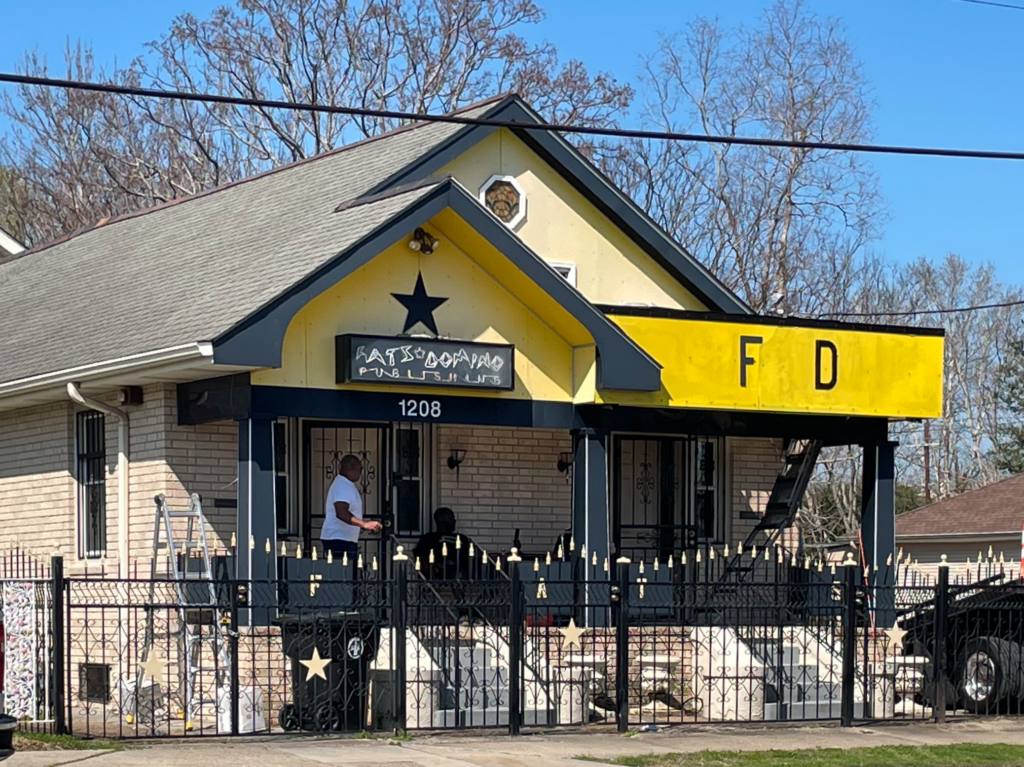
Fats Domino’s home
1208 Fats Domino Ave.
This home belonged to famous New Orleans Rock ’n Roll legend Fats Domino, who sang hits, such as “Blueberry Hill” and “Walkin’ to New Orleans.” During his career, Domino had more than 35 of his songs chart on the U.S. Billboard Top 40. He lived in this home in the Lower Ninth Ward for 45 years, since its construction in 1960, though the property was heavily damaged in Hurricane Katrina.
Hope Slocum is PRC’s Communications Intern
Sources:
Dooky Chase’s Restaurant
- https://savingplaces.org/stories/at-dooky-chases-restaurant-in-new-orleans-the-layers-of-history-run-deep https://www.dookychaserestaurants.com/history
New Zion Baptist Church
St. Augustine Catholic Church
- https://staugchurch.org/history
- https://neworleanshistorical.org/items/show/551
- https://www.blackpast.org/african-american-history/st-augustine-catholic-church-new-orleans-louisiana-1841/
St. Michael’s Residence Hall at Xavier University
- https://neworleanshistorical.org/items/show/1493
- https://www.xula.edu/about/the-full-story.html#:~:text=Ten%20years%20later%2C%20in%201925,Arts%20and%20Sciences%20was%20established.
- https://www.xula.edu/about/factsandfigures/index.html
- https://www.xula.edu/about/the-full-story.html#:~:text=Xavier’s%20origins%20date%20back%20to,previously%20occupied%20by%20Southern%20University.
Dillard University
- https://www.dillard.edu/about/history-traditions/
- https://www.nola.com/entertainment_life/music/article_bbdaf4c4-7481-11ea-92ae-1758b23c65c8.html
- https://www.dillard.edu/about/administration/development/alumni-relations/distinguished-alumni/
- https://www.blackpast.org/african-american-history/dillard-university-1869/
- https://www.dillard.edu/about/du-at-a-glance/
- https://www.hmdb.org/m.asp?m=213943
- https://www.lostcolleges.com/new-orleans-university
- https://prcno.org/timeline-straight-university/
- https://dillard.catalog.acalog.com/content.php?catoid=5&navoid=122
Fats Domino’s home
- https://www.nytimes.com/2017/10/25/obituaries/fats-domino-89-one-of-rock-n-rolls-first-stars-is-dead.html
- https://acloserwalknola.com/places/fats-dominos-house/
Iroquois Theater
- https://acloserwalknola.com/places/iroquois-theater/
- https://www.nps.gov/jazz/learn/historyculture/upload/New-Orleans-Jazz-Sites-Then-and-Now.pdf
Pythian Temple
Dew Drop Inn Hotel & Lounge
- https://acloserwalknola.com/places/dew-drop-inn/
- https://www.dewdropinnnola.com/about
- https://www.dewdropinnnola.com/hotel-rooms
William T. Frantz Elementary School
- https://civilrightstrail.com/attraction/william-frantz-elementary-school/
- https://aaregistry.org/story/william/
- https://www.womenshistory.org/education-resources/biographies/ruby-bridges
McDonogh No. 19 Elementary School, now the TEP Center
- https://civilrightstrail.com/attraction/mcdonogh-19/
- https://neworleanshistorical.org/items/show/1353
- https://www.leonatatefoundation.org/about
Anthony “Tuba Fats” Lacen’s home
- https://acloserwalknola.com/places/1201-st-philip-street/
- https://www.latimes.com/archives/la-xpm-2004-jan-17-me-passings17.2-story.html
- https://www.zillow.com/homedetails/1201-Saint-Philip-St-New-Orleans-LA-70116/148975170_zpid/
- https://64parishes.org/the-tuba-fats-riff
Rose Nicaud’s French Market Coffee Stand
- City and Business Directories: Louisiana, 1805-1929: Michel & C(o). New-Orleans Annual and Commercial Directory, for 1843. New Orleans, Library of Congress, 1843.
- City and Business Directories: Louisiana, 1805-1929: Cohen’s New Orleans and Lafayette Directory, Including Carrollton, City of Jefferson, Algiers, Gretna and M’Donogh, for 1851. New Orleans, Library of Congress, 1851.
- City and Business Directories: Louisiana, 1805-1929: Soards’ New Orleans City Directory, for 1880. New Orleans, Library of Congress, 1880.
- https://www.hnoc.org/sites/default/files/content-photos/The%20World%20of%20Rose%20Nicaud.pdf
- https://scholarworks.uno.edu/cgi/viewcontent.cgi?article=1127&context=td
- https://repository.lsu.edu/cgi/viewcontent.cgi?article=5575&context=gradschool_dissertations
Straight University



